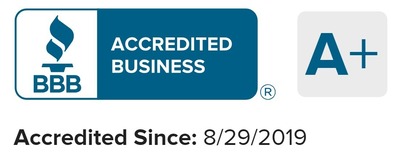A garbage disposal unit, often called a food waste disposer, is an electrically powered device installed under the kitchen sink to shred food scraps into small pieces that can safely go through plumbing. In the U.S., around 50% of homes utilize a garbage disposal, according to the U.S. Department of Energy, underlining their significance in modern kitchens. Properly functioning disposals make kitchen clean-up faster and more hygienic.
However, when misused or jammed, they can create frustrating problems. Ignoring a jammed disposal can lead to further damage and require professional plumbing services. This guide aims to provide you with clear, safe, and effective steps on how to unplug a garbage disposal, saving you time and money.
1. Safety First – Power and Preparation
Before tackling any garbage disposal issues, safety is paramount. This involves disconnecting power to the unit to prevent accidental activation and potential injury.
- Turn off the Power: Locate the circuit breaker in your electrical panel associated with the kitchen disposal. Flip the breaker switch to the ‘off’ position. This ensures there’s no electrical current running to the disposal, minimizing risk of shock. Electrical injuries are often a result of improper handling of appliances; following these steps reduces that risk significantly. The National Fire Protection Association reports over 30,000 home electrical fires annually.
- Visually Inspect the Disposal: Before reaching in, use a flashlight to examine the disposal chamber and identify any visible obstructions. Example: Look for bones, silverware, or large food items that may have caused the jam. Coffee grounds can also cause clogs due to their sticky granules.
- Avoid Reaching Inside: Never put your hand inside the disposal while attempting to fix it. Use tools (like tongs) to remove large visible debris. Boiling water can also help melt and wash away food particles contributing to clogs. Expert Quote: As plumbing specialist, Bob Vila says, “Never rely on your memory of power shut-offs, always double-check the circuit breaker before any disposal maintenance.”
*Actionable Tip: Place a piece of tape over the circuit breaker after turning it off so that others in the household know not to turn it back on until you are finished.
2. The Reset Button – A Quick Fix
Many modern garbage disposals are equipped with a reset button, often located on the bottom or side of the unit. This is a safety mechanism that trips when the motor overheats, which can occur during a jam.
- Locate the Reset Button: Carefully examine the exterior of the disposal unit beneath the sink for a small red or black button. Example: It’s often on a small box-like protrusion or directly on the unit itself.
- Press the Button: Use your finger or a small tool to firmly press the reset button. You should hear or feel a click. Supporting Data: According to a survey by appliance repair company, HomeServe, resetting the garbage disposal solves jamming issues in 40% of cases, which saves homeowners a costly service call.
- Test the Disposal: After resetting, turn the power back on at the breaker and try the disposal briefly with a small amount of water running. Do not overfill the disposal, a small amount is all that is necessary.
*Actionable Tip: If the disposal still doesn’t work, shut off the power again and proceed with the next steps.
3. Manual Unjamming – Using a Tool
If the reset button doesn’t work, unjamming a garbage disposal manually may be necessary. Typically, you can use a tool to carefully rotate the motor and dislodge the obstruction.
- Use a Specialized Wrench or Tool: Many disposals come with a small wrench or hex key specifically for this purpose. Example: This is typically an Allen wrench style tool. Check your disposal manual or under the sink for the tool.
- Insert the Wrench: Locate the wrench opening on the bottom center of the disposal unit. Insert the wrench and move it back and forth, or clockwise and counter-clockwise, to attempt to free the motor. Expert Quote: According to a plumbing expert at Roto-Rooter, this step may take some time and force, so be patient.
- Remove Obstructions: As you rotate the wrench, any blockage may loosen or come out. Again, use tongs to remove the obstruction. Do not reach into the disposal with your hand, at any time.
- Test the Disposal: After the blockage has been removed, test the disposal with a small amount of water.
*Actionable Tip: If you don’t have the specialized tool, you can try using a wooden spoon or broom handle but take care to not break it in the process. Never use metal objects as this could cause serious damage.
4. Preventing Future Jams – Best Practices
Performing regular maintenance and practicing proper disposal habits can prevent future jams and extend the life of your garbage disposal unit.
- Avoid Large or Hard Items: Never put bones, fruit pits, large pieces of vegetable peels, grease, or pasta down the garbage disposal. As Consumer Reports often publishes articles explaining what is, and is not, safe to go down a garbage disposal; review these tips to avoid potential future issues.
- Use Cold Water: Always run cold water while using the disposal. This helps solidify grease, which would otherwise clog the pipes. This will also help properly flush the ground food debris from the disposal. Occasionally, hot water can be used to help dissolve food particles when combined with running the disposal.
- Regular Cleaning: Run a mixture of ice cubes and lemon peels through the disposal occasionally to clean the blades and reduce odors. Example: This will act as a natural cleaning process for the unit.
- Smaller Pieces: Cut up food scraps into smaller pieces before putting them down the disposal to avoid jamming.
*Actionable Tip: Make it a habit to dispose of food waste properly. Consider a compost bin or regular trash disposal instead of using the disposal as a trash can.
Conclusion: Handle Your Garbage Disposal with Confidence
Knowing how to unplug a garbage disposal can save you time, money, and the frustration of a clogged kitchen drain. By following these expert-backed steps, you can effectively manage common disposal jams. Remember, prioritizing safety and maintenance will help prevent future issues. If you continue to experience problems or feel uncomfortable with DIY repair, always seek professional help. Avoid costly plumbing services by being proactive and responsible with your appliance.
For more expert tips on home maintenance or professional assistance, contact OKC Home Realty Services. Let us help you keep your home running smoothly—safety and convenience guaranteed!
Homeowners Also Ask on Garbage Disposal Unclogging
Why does my garbage disposal keep jamming?
Repeated jams are often caused by putting improper items down the disposal or failing to use enough water. According to the EPA, food waste makes up a significant portion of landfill material and these types of items should not go down the disposal.
How do I know if my garbage disposal is broken beyond repair?
If the unit continues to jam, you cannot free the motor, or is making unusual noises, the disposal may require professional repair or replacement.
Is it dangerous to repair my own garbage disposal?
If you follow these steps and prioritize safety by disconnecting the power and not using your hands in the disposal, the DIY unplugging of a garbage disposal should be safe. Always err on the side of caution and call a professional if you are unsure.
What kind of maintenance should I perform on my garbage disposal?
You should regularly clean the blades, run it often, and avoid putting items that can clog the blades down the disposal. This should be done with cold water.
Is it dangerous to have a clogged garbage disposal?
Yes, a clogged garbage disposal can be dangerous. It can lead to motor overheating, electrical issues, or even pipe damage. Trying to fix it without turning off the power can also cause injury. Always take safety precautions when handling it.

Author
Scott Nachatilo is an investor, property manager and owner of OKC Home Realty Services – one of the best property management companies in Oklahoma City. His mission is to help landlords and real estate investors to manage their property in Oklahoma.
 (
(









